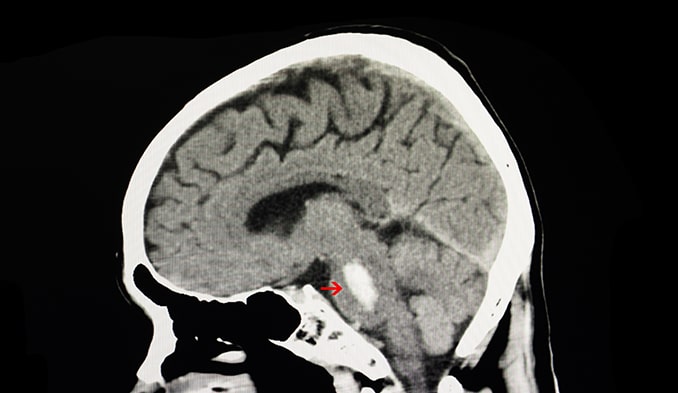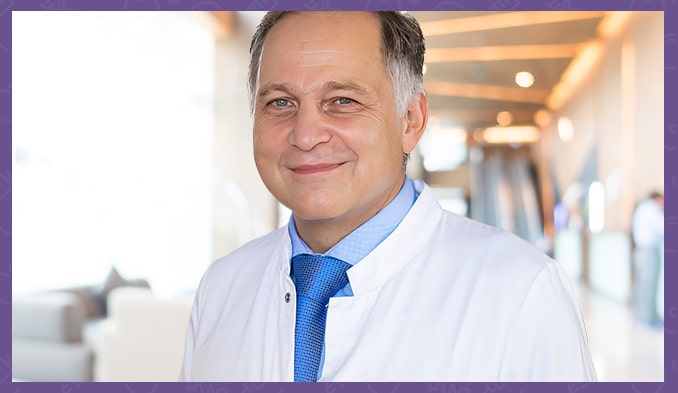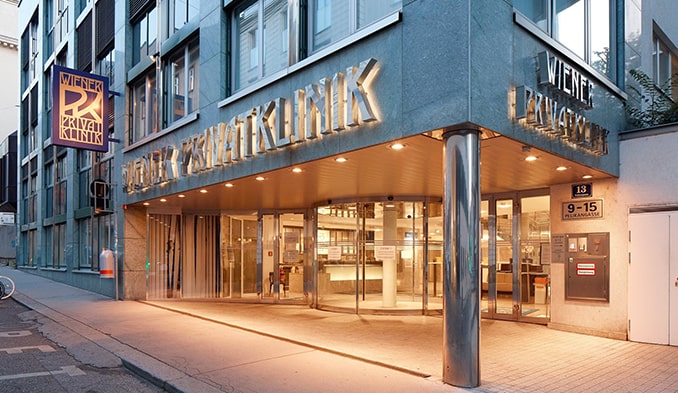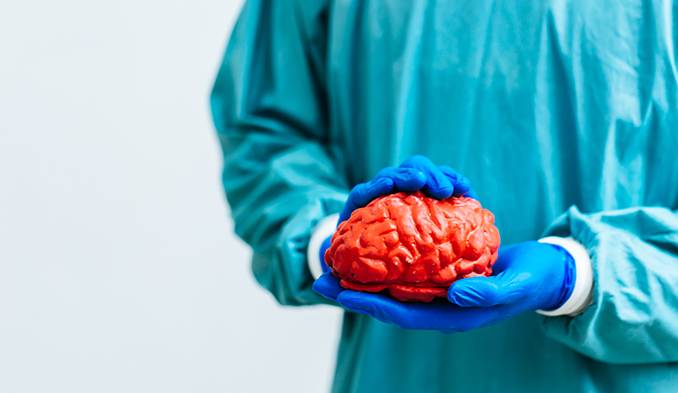What is the nature of brain aneurysm and is it only one type?
There are different types of aneurysms according to their size, location and morphology. The essence of an intracranial or unruptured cerebral aneurysm consists in a focal dilatation of an artery in the brain due to a weakened vessel wall.
What are the symptoms?
- With rupture of an intracranial aneurysm, severe and sudden headache is a leading symptom of subarachnoid hemorrhage. Rupture of the aneurysm can lead to focal neurological deficits (resulting from intracranial hemorrhage) and to a fatal outcome (resulting from vasospasm and global cerebral ischemia).
- Headache is rarely progressive in the unruptured intracranial aneurysm. In patients suffering from this condition, headache is more often considered an occasional symptom. In this type of aneurysm, cranial nerve deficits may occur and accordingly speech problems, impaired vision and double vision may be observed. When in the area of the artery in which the aneurysm is, it causes an ischemic stroke, symptoms may occur.
How is a cerebral aneurysm diagnosed?
Diagnosis of unruptured brain aneurysms is mostly done by brain imaging, i.e. MRI and MR angiography. As a result of the availability of good quality brain imaging, the percentage of diagnosed unruptured intracranial aneurysms in Europe has increased.
What are the risk factors of unruptured intracranial aneurysm?
Risk factors for the formation, growth and rupture of intracranial aneurysms are hypertensive, polycystic kidney disease, smoking and sudden intake of large amounts of alcohol. The prevalence of unruptured intracranial aneurysm in people over fifty years of age is approximately 3.2%. If more than two people in a family are affected by this condition, the probability of detection increases by about 10%. The risk of formation and subsequent rupture of an intracranial aneurysm is higher when the patient has had a haemorrhage as a result of a previous intracranial aneurysm.
When there is no hemorrhage, what aneurysm treatment is used?
Once an unruptured intracranial aneurysm is diagnosed, it should be determined whether there were symptoms of this condition or whether it was discovered incidentally. If there were symptoms, two options are considered: endovascular or microsurgical treatment. When the aneurysm is discovered accidentally, then there are three options:
- The patient should change his lifestyle: stop smoking and do not consume alcohol, tests for arterial hypertension should be done, and if the blood pressure is elevated, treatment should be applied.
- The patient should consult a specialist to determine the risk of rupture of the intracranial aneurysm (mean 3% over 5 years) and compare it with that of endovascular or microsurgical treatment (mean 4% over 5 years). However, the decision should be made individually according to each patient and his/her individual risks.
- Follow-up is necessary because if the aneurysm is growing, the likelihood of its rupture is 12 times more likely compared to that of stable aneurysms.
What are the key factors that are considered when endovascular or microsurgical treatment is discussed?
Such factors include the patient's age and symptoms, risk factors, the maximum diameter of the intracranial aneurysm, its morphology, location and relevant growth data.
Does the size of the aneurysms have an effect?
Yes, they occupy a large space, and the more the diameter of the aneurysm expands, the greater the risk of rupture becomes.
Do patients fully recover after aneurysm rupture?
In 25% of all patients, recovery was complete. Other 25% returned to normal lifestyle but continued to have some minor symptoms. 10% recover partially, can live independently but with limitations, and other 10% remain dependent. For nearly 20% of all patients, the outcome is fatal.
What are the risks of not starting treatment for aneurysms in time?
Rupture of the aneurysms is possible, which is accompanied by hemorrhage into the space covering the brain (subarachnoid space). This is the most severe complication and is called subarachnoid haemorrhage. Ischaemic stroke is a less common complication. This condition results from thrombus formation in the unruptured intracranial aneurysm.
Can a person be genetically predisposed to forming aneurysms?
Yes, genetic conditioning is known to exist if more than two members of the patient's family have been affected.
What impact does stress have on the condition?
To date, no association between intracranial aneurysm formation, growth and rupture and stress has been demonstrated. Indirectly, it may pose a risk because it can lead to an increased risk of infection and high blood pressure.
Can we protect ourselves?
It is recommended that when two or more relatives in the family are known to have a brain aneurysm, screening should be done. Lifestyle is also of particular importance.











